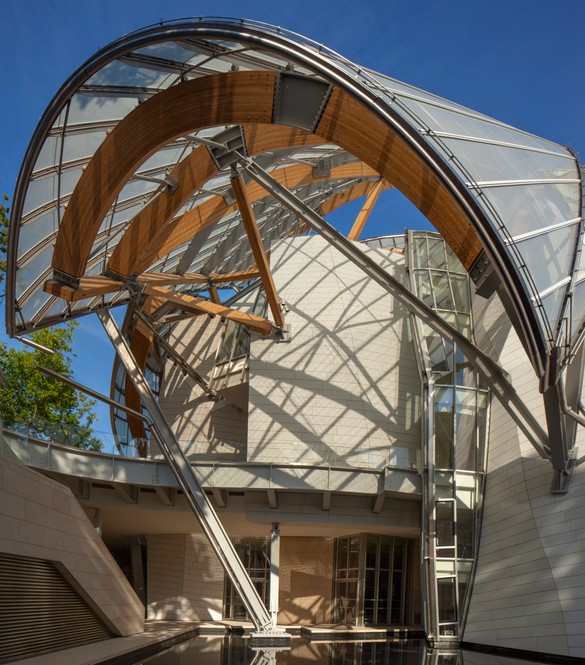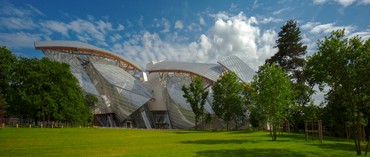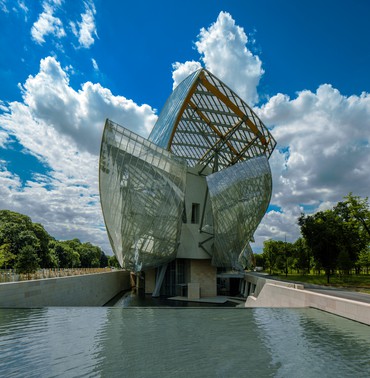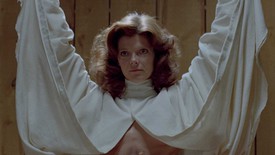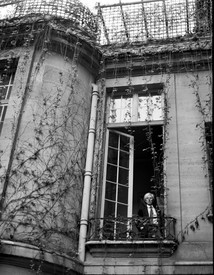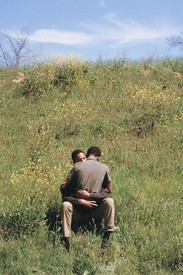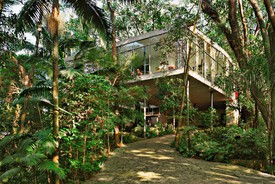
Derek Blasberg is a writer, fashion editor, and New York Times best-selling author. He has been with Gagosien since 2014, and is currently the executive editor of Gagosien Quarterly.
Derek Blasberg First, let’s talk about Paris. Do you have any vivid or formative memories about Paris or the Bois de Boulogne?
Frank Gehry I’ve loved Paris since I lived there in 1960. The first time that I visited the garden with Bernard Arnault, I could feel the history of the place; it made me remember Proust, who writes about it in his books. I actually started to cry.
DB It seems as though this building must have been an emotional project, and ultimately it is a triumph. There are so many iconic structures already in Paris. Was that a daunting observation, or was it exciting to anticipate that this structure might join that pantheon?
FG I don’t think about it that way. Of course I have great respect and admiration for the buildings of Paris, and I know them well from my time living and working there—in fact, I studied them. But this project is in a setting that is not immediately adjacent to those buildings. It had to respect the heritage of the older buildings, but it also had to be something different.
DBWhen did you start working on its design? What informed your decisions?
FGWhen I first met Bernard Arnault in 2001, he told me about his plan to build a place in Paris that would encourage creativity and make contemporary art accessible to everybody. He brought me to the Jardin d’Acclimatation. We discussed creating an ephemeral building in the tradition of the nineteenth-century garden pavilions. The question was how to accommodate the functions of the building and still have a building that would seem open and transparent. That’s why the building is made of two layers—the glass sails on the outer layer and the “icebergs,” which house the galleries.
DBI know you are a fan of water—and fish, which you’ve used as inspiration for some of your artworks and earlier buildings—so does it put a smile on your face that you’ve put a big ship in the middle of Paris?
FGI wanted to create a regatta through the park—not just one ship, but many! The big panels of curved glass that form the facade, what we call “the sails,” help bring the park into the building, and the building into the park. From the outside, you see the sky, the trees, and the water reflected in the sails. When you’re inside, you see out to the surroundings and feel connected to the garden.
DBI was told that you designed this building from the inside out. Unlike other spaces, when you design galleries, you need to hang works on walls, not glass. What other factors dictated the way this project came together?
FG When you design a museum, you ordinarily start with a philosophy of how the galleries ought to work, and then you decide where to put them in relation to each other and the building as a whole. This was a different problem. This is a building in the Bois de Boulogne. If it didn’t have the glass, we would have been required to create a lower and more blocklike structure. But we wanted the glass, to make the Fondation reminiscent of a garden building. That decision enabled us to add some height to the building, which gave us more space. The height also allowed us to create exterior terraces that connect the Jardin to the building. Visitors can walk up the exterior of the building to the topmost terrace, which has extraordinary views of Paris.
DBThe building is so impressive. How has it been to work with Fondation Louis Vuitton on the project?
FGThis was really a collaboration with Bernard Arnault. He took part in every round of study and revision. His input was critical to the process. This would have been a very different building if it had been done for anyone other than Bernard. He was fantastic to work with as was his team.
Photos: © Todd Eberle for Fondation Louis Vuitton, 2014
